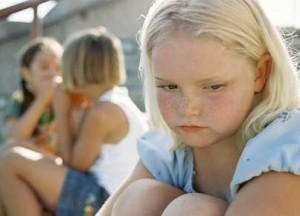 “Bullying is just a part of life.”
“Bullying is just a part of life.”
I’ve heard clients, parents, and others say this, or express a similar sentiment — whether it’s between kids or adults, or even between an adult and a child. This is a commonly-expressed belief, and in some ways, it is true. It’s important to accept that it happens, and that some people pick on others out of physical aggression or psychological dominance. However acceptance that something is so does not equal tolerance of that same fact. Whether it’s freshman hazing or name-calling on a playground, bullying does not have to be and should not ever be tolerated.
Some parents don’t know when their child is being bullied. Some parents don’t know their child is a perpetrator. Here are a few points that parents (and everyone who works with children) can learn about it to help prevent it from happening and to address it if something has already happened or is happening:
October is Bully Prevention Month, and prevention is one of the most important things one can do. Also, if your child is or has been a victim of bullying, there are some steps that s/he can take to lessen the chances of becoming a target:
- Get involved in activities and with other children. Often a bully will choose to pick on the kid who is socially isolated.
- Make sure your child knows it is NOT his/her fault!
- Brainstorm solutions WITH your child.
- Get the other parents and adults in charge involved. Follow procedures and take necessary action to stop it from happening again.
Be aware of the symptoms. Your child may be a victim if you notice:
- recurring injuries — scrapes, bruises, etc.
- physical issues that indicate emotional distress — headaches, stomach upset, etc.
- missing personal items
- fear of going to school/activities
- change in mood, and level of social anxiety
- drop in grades and participation
- bullying their friends or younger siblings (may be “taking it out” on others)
If you think your child is a victim, here are some steps you can take:
- Talk to your child. Let them know you are here to listen and won’t judge them.
- Talk to their teachers/staff to learn more about the situation, and the protocol they have in place for addressing the bullying.
- Work with the school or organization to put a procedure in place for bully prevention and confrontation if there is not one yet in place.
Whether it’s in school, on the playground, at play, or during extracurricular activities, bullying does happen. We must communicate with our kids about it, so that we can stay connected to them. Only then can we stop our children from being perpetrators or victims — or in some cases, both.
If you want to learn more or become more involved in this important cause, there are dedicated organizations in our area that can use your involvement! For example, the Sexual Assault Center of Saginaw has a bully prevention program. Their information is listed below.
Sexual Assault Center
www.saprogram.com/
Ph: 989-790-7500
Crisis Line: 989-790-9118
You may also find more information from the following sources:
http://childandfamilysaginaw.blogspot.com/2012/09/how-to-tell-if-your-child-is-target-of.html
http://childandfamilysaginaw.blogspot.com/2012/10/its-not-bullying-its-hazing-that-makes.html
http://childandfamilysaginaw.blogspot.com/2012/09/how-to-help-your-child-with-bullying.html
—
Michelle Mersy, C.P.C. is the mother of two wonderful children, and a certified Life and Parenting Coach. She affirms, “Stop just wishing things could be different. They can be, if YOU do something different. Coaching will make that difference.”
989-397-8386 ~ [email protected]
www.MichelleMersy.com
